The F-35 cleared all Category 1A deficiencies in November last year say the U.S. Government Accountability Office and there are now eight remaining Category 1B deficiencies.
Last June, Defense News reported exclusive details about 13 major technical issues, known as category 1 deficiencies, impacting the F-35. The website explained that:
“A category 1 deficiency is defined as a shortfall that could cause death, severe injury or illness; could cause loss or damage to the aircraft or its equipment; critically restricts the operator’s ability to be ready for combat; prevents the jet from performing well enough to accomplish primary or secondary missions; results in a work stoppage at the production line; or blocks mission-critical test points.”
Category 1B represents problems “that have a mission impact with a current workaround that’s acceptable to the war fighter with the knowledge that we will be able to correct that deficiency at some future time”, Vice Admiral Mat Winter, the U.S. Defense Department’s F-35 program executive, was quoted as saying.
It is understood that engineers have eliminated all of the deficiencies believed to endanger pilots and about 90% of other serious flaws that could hamper missions.
The remaining serious deficiencies include excessive pressure that could injure pilots’ ears, night-vision camera images under some conditions being very poor and limited radar sea-search capability.
According to Bloomberg, beyond the eight most serious outstanding flaws, the F-35 program still faces 860 lesser software and hardware deficiencies, of which 104 are considered fixed but with verification pending.
“The remainder have a fix under investigation, in the works or are deemed less critical mission enhancements that don’t need immediate attention, according to the program office. That’s up from 855 in January 2018. About 85% are software-related.”
The programme office say they anticipate resolving the first two matters next year and the radar issue in 2024.



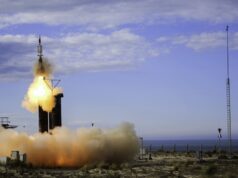
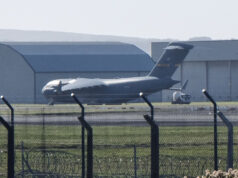

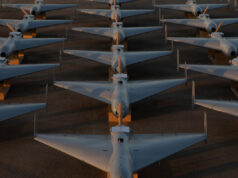

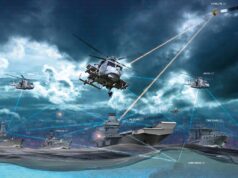

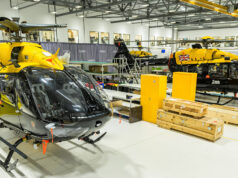



I think the F35 will be a good aircraft in a few years when all issues are fully ironed out. It was an ambitious programme to start off with and i think it will also inform future development programmes. It is a capable plane and combined with the Eurofighter I think the UK has one of the very best suite of full spectrum capabilities. One thing I do feel though is that the UK could develop a low cost plane like the Swedes have with the Gripen. It’s good we have them on board for Tempest and hopefully that philosophy of a low cost but capable aircraft can be propagated through the Tempest programme. If we can make Tempest an aircaft that can evolve and adapt to new technologies then I think we can avoid many of the issues that plagued the F35 programme. Also I think we have to realise that multi-partner programmes lead to massive cost overruns. Keeping down the number of partners to three which are complementary seems like a good idea as well.
Typhoon only had 4 partners…but one of them was Germany..
But lets put to bed the ‘Gripen is low cost’ myth. The Gripen E is coming in slightly more expensive than an F-35A. Will it be cheaper to run? Probably. But that’s to be expected of a vastly less capable aircraft with an engine that has half the thrust. Gripen is a good aircraft make no mistake, it makes sense for smaller nations for air policing. In that circumstance its low running costs make a lot of sense. But as a high end combat aircraft? No. It’s performance in terms of range and speed with weapons load isn’t much to shout about. Ultimately it is a very small aircraft and that comes with limitations. For the UK it would make no sense to have a Gripen equivalent. It’s not high end enough for when the shooting starts and its not low end enough for a permissive environment. It’s a bit like the A-10 of the fighter world. Looks good, but when you dig deep into it its neither cheap enough or good enough.
Realistically the UK isn’t going to have a fully capable F-35 fleet until c2026. And its not just the overall numbers. At the moment we can carry legacy Asraa, Amraam C-5 and Paveway IV. And thats it. Reasonably capable, but nothing to write home about. By 2025/6 we’ll have Asraam CSP, Amraam D, Meteor, Gun Pod, Spear (and possibly Spear-EW and SpearGlide), Paveway IV and Paveway IV Penetrator.
You can seen from that list that we’ll have a vastly more capable armoury. But it’s still short of some items….heavyweight munitions, long range A2G missiles, cheap munitions (think JDAM or SDB1) and, for the RN, anti-ship missiles. We’ve got a long way to go…
Seeing as the Lightning isn’t getting Storm Shadow, the RAF and FAA are going to have to wait for Perseus to produce a heavyweight cruise missile. If the money was there I’d be pushing for the programme to be moved up to a 2024-5 in-service date, but that’s pretty much impossible.
SPEAR 3 is going to have to do until then, although to be fair a saturation attack with dozens of SPEARs seems a lot more threatening than singular missiles.
Perseus was just a concept from MBDA. Not the real thing unfortunately. MBDA have proposed 2 missiles for the FCASW requirement (replacement of Storm Shadow/SCALP, Harpoon and Exocet). One is a long range, subsonic, extremely stealthy missile (which apparently the UK favours) and a supersonic cruise missile (which apparently the French favour, with an eye on the anti-ship missile market). The supersonic missile would have a lower range but would also have the ability to target large and slow air targets at extreme range (think AWACS and AAR aircraft at 500km+ range). The intention appears to be to share development, sensors and sub-systems to reduce costs. Hopefully, we’d look at getting both, probably with an emphasis on the subsonic missile, as they’re complimentary capabilities. I suspect the French will want air launch, ground launch, canister launch, Sylver launch and sub-surface launch for both missiles. Which is great news for us. But….no chance of a 2025 time-frame, its more likely to be 2030+, my bet is more like 2035. No sign of the effectors either unfortunately.
The best route for us to take to increase the utility of F-35B (and Typhoon) in the intervening period is to get the 3 separate Spear variants in service (Spear, Spear-EW and SpearGlide), and develop a further 2 Spear variants; a SpearSimple with just GPS/INS and perhaps SAL as a cheap munition (an SDB1 equivalent, currently all of our air to ground munitions on Typhoon and F-35B are rather pricey to say the least) and a SpearRecon version with E/O payload, data link and extended range (like Spear-EW) for an attritable recon ability at range. That would make the Spear family a compelling prospect for export sales as well. It does look like MBDA are working on further versions beyond those 2, but I’m damned if I can think of anything else they could squeeze in. These are all easy to integrate as sharing the same mass, connections and shape so any integration effort is massively curtailed.
Apart from that buying a very small number of JSM could be useful (think 50 or so) to provide a degree of anti-shipping and longer range ‘heavier’ weight capability for the RN. JSM is still to be integrated though so it won’t be available until 2025. And the budget is very tight. We also need to address the heavy weight munitions obsolescence and lack of a gliding weapon and modularised weapon gap that we have. Hopefully MBDA will make sure the SmartGlider Heavy is like a JSOW with the ability to switch payloads (and a powered ER capability would be nice). That could help with replacing PWII and EPWIII which we need to start thinking about now. A 500lb PWIV has limitations.
Gun Pod?
The 25mm gun pod for the F-35B. UK is yet to order any. Apparently they’re coming later…
Optimist
Useful to have on day two of any future conflict.
“F-35B Airborne Gunfire Testing”
https://www.youtube.com/watch?v=5HKp62Ze5lY
The A-10 “not good enough”? Really? Go ask the infantry who fought in Iraq and Afghanistan if it’s not “good enough”. Good Grief!
What pray tell is the A-10’s main role?
Killing enemy tanks and attacking ground targets in the front edge of the battle in a peer conflict.
And it can’t do it. It’s not survivable in a peer war. The USAF knows this. Everyone knows this. It was barely, if at all, survivable in that role in the mid-80’s. Now? It wouldn’t last 5 minutes down low against a competent and well equipped enemy.
Is it good at playing whack-a-mole in Iraq and Afghanistan? Yes. It’s a permissive environment. No-one is shooting back with anythng bigger than a Dushka. Even then it struggled getting up to AAR platforms in Afghanistan so F-15 and F-16 were preferred. And nothing it did, in that permissive environment, couldn’t have been done far cheaper by another platform like a Super Tucano,
So it’s a plane that can’t do its main role in a peer conflict and is far too big and to expensive to operate in a permissive COIN environment.
But people see big gun and go wooooo….
Some people have called in A10s and saw what the big does, didn’t say wooo though, more like f*** me!
“big gun” – sorry dyslexic thumbs.
You think the Gripen is less capable than the F-35??? OR vastly less capable than the F-35. Great words but words mean nothing without evidence to back those words up. Which you don’t have because there isn’t any. The Gripen would annihilate an F-35 in a dogfight or within visual range (fact). As for beyond visual range that depends on how good your long range armoury is not the aircraft. The facts are the F-35 is a complete basket case that’s going to cost a fortune to maintain. You do realise there is a very big reason why the UK, and just about every other customer of the F-35 are going there own way with their next fighter jet programme don’t you? Now I’m stating facts here not some fan boys opinions. All of the customers of this aircraft are very disappointed in its capabilities and the costs just keep mounting. Its not the initial costs that are the problem. Its the costs of keeping it in the air & keeping it in a reasonable condition to perform. Its already been stated by the US that it would have to have dedicated fighter escorts in a battle zone with an enemy with a decent air fighter wing. Does that statement say everything to you as it does to me. The programme was to ambitious, what is left of a do all fighter doesn’t excel in any dept. The Gripen is also short range and single engine powered. It’s designed to protect Swedish airspace and nothing else. The F-35 also short ranged and reliant on mid air refueling. There’s yet another easy target for an decent opponent. Facts are the F-35 is pretty quick in a straight line but it has a slower climb rate and its turning abilities are poor. Then again we’ve just been informed they can only use an afterburner for so many seconds at a time. Yet another handicap. Surely if a country was happy with its purchase it wouldn’t be announcing to the world 1 month after receiving it, that it was going to build its next gen fighter itself even the biggest fan boy in the world must understand what that means. The F-35 is an adhoc expensive less than capable aircraft. The costs to keep it in the air are mind boggling. Its sadly cost far too much money to be abandoned but its telling the USAF has ordered a new upgraded batch of F-15’s . Now that is a very decent aircraft of top quality it’s dated but its an helluva lot more useful than the basket case F-35.
Interesting to note that nobody really seems to know the actual cost of the RAF F35-B per aircraft.
“79. When he was asked about The Times’s estimates of the cost of an average F-35 produced this year, once retrofits and upgrades are included, Mr Bronk said £130–155 million was “probably a fair figure in terms of what you would end up parting with, to get a representative squadron, per aircraft of F-35s produced this year, counting the necessary spares, consumables, infrastructure, set-up costs and so on”.
https://publications.parliament.uk/pa/cm201719/cmselect/cmdfence/326/32607.htm#_idTextAnchor024
Full Report.
https://publications.parliament.uk/pa/cm201719/cmselect/cmdfence/326/32602.htm
To be honest I’m not a fan of Gripen for the UK.
I do honestly believe that we need a lower-cost aircraft to bolster numbers but that aircraft is not the Gripen.
If it were my choice I’d go with the F/A-18E/F Super Hornet, and/or the Growler. They’re cheaper than Gripen but more capable, and can carry loads similar to Typhoon. It can also operate in hostile environments.
They come in at around £50million per airframe, so we could buy them in decent numbers. The cons would be that it’s unlikely we could licence build them here and would have to buy them ‘off the shelf’ from Boeing – a con for British industry, but a pro for the RAF as they’d come in much cheaper.
Can we?
The Pentagon will have to live with limits on F-35’s supersonic flights
By: David B. Larter , Valerie Insinna , and Aaron Mehta April 24
“WASHINGTON — An issue that risks damage to the F-35’s tail section if the aircraft needs to maintain supersonic speeds is not worth fixing and will instead be addressed by changing the operating parameters, the F-35 Joint Program Office told Defense News in a statement Friday.
The deficiency, first reported by Defense News in 2019, means that at extremely high altitudes, the U.S. Navy’s and Marine Corps’ versions of the F-35 jet can only fly at supersonic speeds for short bursts of time before there is a risk of structural damage and loss of stealth capability.”
https://www.defensenews.com/air/2020/04/24/the-pentagon-will-have-to-live-with-limits-on-f-35s-supersonic-flights/?utm_source=clavis
How often do these planes actually fly super sonic though. They would burn their fuel out in now time. If shit really hit the fan and they need the after burners I’m sure they will worry about the long term damage to the tail fin when they arrive back at base.
Think carriers, and read the attached link.
@nigel You know damn well that this is a greatly overblown issue. Happened once during testing and cannot be recreated. Pilots are under advisement but can ignore guidance if required in combat.
F35 wasn’t designed for supecruise like the F22 and Typhoon, so supersonic flight only would be for short periods. Most fast jets don’t go supersonic very often, mainly due to external stores restrictions, and airspace/overland restrictions. A Tornado GR4 pilot who now flies for the Red Arrows, said he went supersonic only twice in the GR4, in the 7 years he was operational on the type.
In which case, why has the JPO classified it as a category 1 deficiency? Seems odd in that case.
“The JPO had classified the issues for the “B” and “C” models as separate category 1 deficiencies”
Read the original report not some journalist take and you might understand.
Most people don’t know that for well over 20 years of its career, from the 90’s onwards, the air intakes on the Tornado GR fleet had been modded to stay in place to reduce maintenance. They couldn’t have gone above m1.4 anyway.
That’s very true mate, the underwing tanks limited it to subsonic as well. I believe the F3 still had the intake ramps working until it’s retirement.
As quoted by Lockheed Martin: “While the F35 does not fit the strict definition of super cruise, it can go for 150 miles without after burners at super sonic speeds.”
The intake ramp actuators were removed back in the GR1 days, as they constantly leaked. The solution was to remove the actuator and replace it with a fixed length strut. The strut was designed to position the ramp so it was open just a touch. This was enough to allow the aircraft to go supersonic and in a clean configuration reach Mach 1.5. The strut, because it wasn’t damped would cause local structural cracking, so on the GR4s the actuator was refitted, but still inhibited.
Thanks for the GR1/GR4 explanation. Did they ever have any problems with the actuators on the F3?. cheers.
most fast jets don’t go supersonic very often, usually limited by stores and overland restrictions. Typhoons can supercruise, but can only do it far out over the north sea, or on Red Flag exercises, or operational over Syria etc.
Personally, I think the Germans have made the right choice and will have a very well balanced Airforce.
If we cut the numbers of the F35-B and increase our Typhoon fleet with some FA18 Super Hornets and Growlers, we would no doubt end up with more aircraft and be able to launch the Hornets and Growlers from the QE carriers at some point in the future.
After all, money is going to be tighter than ever after COVID-19 disaster.
This was also interesting.
“The UK parliament has questioned a United States threat to cancel long-planned deployments of the Lockheed Martin F-35 Lightning II Joint Strike Fighter (JSF) to the country following the government’s decision to open-up the national 5G network to Chinese development.”
https://www.janes.com/article/96004/uk-parliament-questions-us-threat-to-cancel-f-35-deployments
Even worse. A sign of things to come no doubt?
“UK urged to scrap ‘unaffordable’ Galileo replacement
Gareth Jennings, London – Jane’s Defence Weekly
11 May 2020”
https://www.janes.com/article/96050/uk-urged-to-scrap-unaffordable-galileo-replacement
Except fitting the carriers with catapults is very costly, and aquaring another aircraft type is also very expensive, we would end up spending more money, and have a less capable aircraft flying from our carrier’s. More Typhoons would always be nice though.
Would Super Hornets need a catapult, strictly?
Could they be fitted with arresting hooks, the QE with an arresting wire and then operate as STOBAR?
I think we should definitely buy more Typhoons. Sadly, this is unlikely.
Yes, they need catapults. The super Hornet doesn’t have the thrust to weight ratio to takeoff without them, not with a useful payload anyway.
The German Super Hornet purchase is not a done deal. In fact German observers think its very unlikely.
A very good explanation from a German expert here:
https://www.youtube.com/watch?v=n7NuNDlJBBI&t=743s
Two people happy if the UK cancels more 5th generation fighter purchases: you and Putin.
Facts are Putin would be over the moon to see us waste more money on this flying pig. He has the SU-35sm which is 4plus gen that can out do the F-35 in every department in real war situations. That’s without the need to get more of the SU-57 built. It’s no wonder they’re stating they only need 75 of them. The F-35 is only as good as the beyond visual range armoury at its disposal. Guess which one has the longer range missile? It isn’t the F-35 there’s a clue. Which one carries twice as much munitions it isn’t the F-35 there’s another clue. Which one has a twin engine set that can travel farther and faster? Yet again it isn’t the F-35. Which one has supermanouvreability and thrust vectoring. Yet again it isn’t the F-35. No wonder everyone who’s received it is building their own next gen aircraft.
What about the USMC?
“Marines Won’t Cut Planned F-35 Buy Totals for Now, But External Review Could Change That”
https://news.usni.org/2020/04/01/marines-wont-cut-planned-f-35-buy-totals-for-now-but-external-review-could-change-that
That issue has been known about for a while. It’s been written up very over-dramatically. The issues happened once on a test aircraft at the absolute extreme end of the envelope, conditions that an operational aircraft would never reach. A fix has been put in place, but they’re unable to close the issue off as they’ve been unable to replicate the problem despite numerous attempts to do so. In other words they’ve fixed it, but they can’t prove they have as they can’t get the problem to re-occur…despite trying.
Please read your article again its the F35C not B with this problem
I did, read the article in full.
“The JPO had classified the issues for the “B” and “C” models as separate category 1 deficiencies, indicating in one document that the problem presents a challenge to accomplishing one of the key missions of the fighter jet. In this scale, category 1 represents the most serious type of deficiency.
While it may seem dire that an aircraft procured for flying at supersonic speeds will be unable to do so for extended periods, the F-35 may not need to do it that often.”
@Nigel No, it doesn’t say that the aircraft is unable fly at supersonic speeds. It says that there was a one time, unrepeatable problem, and that pilots shouldn’t fly at supersonic speeds in one part of the flight envelope where it occurred unless they have a good reason. The incident remains on the record so that if more is discovered, it can be fixed even though it already probably has.
You are deliberately overstating this issue here and elsewhere because on your own personal agenda.
This was a quote from the attached link I posted above from Janes Defence Ron5
There is no Agenda, how are things in the USA by the way?
Some more information for you on the Gun Pods. Have they solved the current problems with Lot 9?
https://www.defenceconnect.com.au/strike-air-combat/5519-cracks-appearing-on-new-f-35as-due-to-gun-use
Fine, how are things under your bridge?
No sign of cracking at the moment, fortunately!
“F-35 programme reduces remaining SDD capability requirements, but bulkhead issue remains”
https://www.janes.com/article/95042/f-35-programme-reduces-remaining-sdd-capability-requirements-but-bulkhead-issue-remains
In lockdown, I have got round to reading the 1994 book “Skunk Works” by its then boss Ben R Rich. For their Mach 3 Oxcart/A-12/SR-71 they developed “special antiradar coatings loaded with iron ferrites and laced with asbestos”. Granted a 1965 stealth coating will not be as stealthy as a 2010-20 coating, but the 1965 version can cope with Mach 3.
USMC F-35B may not need supersonic as the USN has SuperHornet for fleet defence. The RN will only have F-35B. It will need supersonic to shoot down enemy aircraft before they can release anti ship missiles at the RN fleet. I would be willing to give up a little bit of stealth on the F-35B tail in order to have unlimited use of supersonic performance. If that means going back to an earlier, more robust antiradar coating then so be it.
For those having a fit of the vapors over the word asbestos. Blue & Brown asbestos are lethal iron silicate amphiboles. Do not use ever.
White asbestos only shares the name asbestos. White asbestos ,or chrysotile, is a serpentine mineral, a form of magnesium silicate & closely related to talcum powder. Long fibres can be dangerous, but short fibres are not.
Over react much?
The iron ferrites you refer to can be likened to very small >2mm swarf/iron fillings. These act as small antennas and soak up the RF energy being received. They then convert than energy to heat, as well as re-radiating a small part something like 15% compared to the total absorption. Because of their size they only really work over a narrow frequency bandwidth, but you can cut them to length to be more affective against specific radar, much like chaff. The other issue with them is weight. For a 1 metre square panel, a single layer is about ten times the weight of a plain paint. When you require at least two coats it soon adds up. There are better performing materials and methods of radar absorbent material such as silicon carbide, which is more tolerant of heat.
One of the problems the F35 had been having was that the RAM around the exhaust was heating up too much and flaking off, particularly with the B model. This was solved by changing the RAM to a more heat tolerant version. The other issue was the material they used for the tail fins, which was warping due to aerodynamic heating when the aircraft was flying supersonic and performing high g turns. Apparently this fault only occurred once and they couldn’t reproduce it. So they decided to limit the speed/g limit as a caution. If push comes to shove in a real shooting match, I can guarantee the pilot will be ignoring the caution.
It’s got missiles that travel at Mach 4+ to do the supersonic bit..
More & more of the anti ship missiles that hostile nations have, are also supersonic & longer legged than the elderly Harpoon on our side. F-35B needs to swat them (hostile supersonic AShMs & their launch aircraft) down before they get anywhere near our fleet.
So has the Gripen, Meteor.
12 November 2018
“In October, Saab successfully completed a test flight by a Gripen E aircraft with the Meteor Beyond Visual Range Air-to-Air Missile (BVRAAM) for the first time.”
It also has a top speed of Mach 2 as opposed to Mach 1.6 for the F-35B, and a G rating of 9G as opposed to 7G for the F-35B. Fly-away cost, $85 million. Not too shabby when you think about it.
The F35-B will not carry Meteor until at least 20204
A quick question, would anyone on here know who will be taking over from Turkey?
Thank you in advance.
“US GAO finds Turkey’s suspension from F-35 programme likely to compound supply chain issues”
https://www.janes.com/article/96105/us-gao-finds-turkey-s-suspension-from-f-35-programme-likely-to-compound-supply-chain-issues
Pretty much every F-35 component supplier will be bidding for the work aggressively. It’s not every day that you get the chance to deliver parts for a 3000 production run aircraft for the next 30 years…great business.